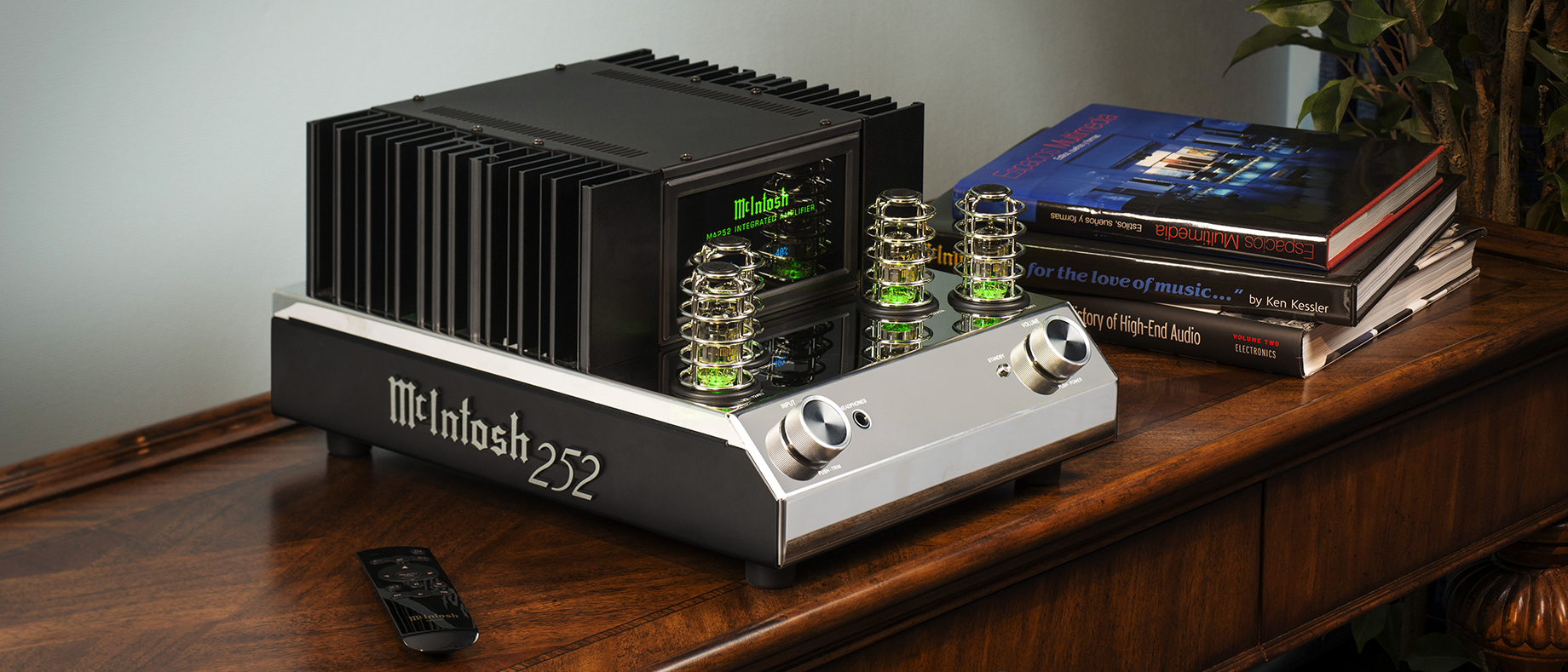What Hi-Fi? Verdict
With a distinctly unique style and excellent implementation of both valve-based and solid state amplifcation, the MA252 offers up an affordable option for those seeking authentic McIntosh quality without some of the loftier prices.
Pros
- +
Stunning looks
- +
Superb sound
- +
Great control options
- +
Unique valve colour
Cons
- -
Confusing standby LED
- -
Rough speaker terminals
Why you can trust What Hi-Fi?

This review and test originally appeared in Australian Hi-Fi magazine, one of What Hi-Fi?’s sister titles from Down Under. Click here for more information about Australian Hi-Fi, including links to buy individual digital editions and details on how to subscribe.
The McIntosh MA252 integrated amplifier is the first hybrid integrated amplifier this world-famous American company has ever built. The import of that statement needs to be viewed in the context that McIntosh has been building amplifiers for more than 60 years. So the McIntosh MA252 has been 60 plus years coming, and boy was it worth the wait.

But wait! What is a hybrid integrated amplifier?
Basically it’s an audio amplifier where one of the two amplifying stages uses valves – or ‘tubes’ as our US friends like to call them – to amplify the audio signal, while the other amplifier stage uses transistors.
Because any integrated amplifier has two amplifying stages – usually called ‘pre’ and ‘power’ stages – this means there are two ways to build a hybrid audio amplifier. One way is to use valves for the ‘pre’ section and transistors for the ‘power’ section; the other is to use valves for the ‘power’ section and transistors for the ‘pre’ section.
In the MA252, McIntosh has elected to use the former approach by employing 12AX7a and 12AT7 valves in the preamplifier stage and transistors in the output stage. The reason McIntosh does it this way, rather than the other way ‘round, is to ensure the best of both possible worlds: the sweet sound quality that’s inherent in valve amplification and the very high power output that solid-state devices make possible.
But wait! Is it not possible to get high power output from a valve amplifier stage?
Of course it is… and no-one knows this better than McIntosh. After all, its MC2301 valve amplifier is rated with an output of 300-watts into 8Ω. But achieving such high power output using only valves costs money… lots of it.
The latest hi-fi, home cinema and tech news, reviews, buying advice and deals, direct to your inbox.
The McIntosh MC2301 currently retails for £14,900 / $19,900 / AU$27,995, and it’s just a single-channel amplifier, meaning that you’ll need to buy two of them for stereo, so that’s around £29,800 / $39,800 / AU$55,990 all up for a high-power stereo valve audio amplifier.
The MA252, on the other hand, is rated at 100-watts per channel into 8Ω (160-watts per channel into 4Ω) and it has an RRP of only £4,500 / $5,782 / AU$7,995).
Of course using transistors rather than valves in the output stage means that you also miss out on one of the other advantages of using valves, which is that it’s extremely difficult to drive them into hard clipping.
Unlike transistors, which go into hard-clipping the instant they are over-driven (and sound awful when this happens), valves have an inherent ‘soft clipping’ characteristic when they’re over-driven that can actually make the sound quite attractive. Indeed many guitar players use valve amplifiers with special ‘overdrive’ circuits for this express reason.
To circumvent this, the high-current transistors McIntosh uses in the output circuitry of the MA252 are continuously monitored by McIntosh’s patented ‘Power Guard’ circuitry which monitors the output signal for any signs of overdrive and makes real-time micro adjustments to the input signal to prevent the output stage from being driven into clipping. You will know if the Power Guard circuit is operating because when it does, the colour the valves are glowing changes from green to orange.
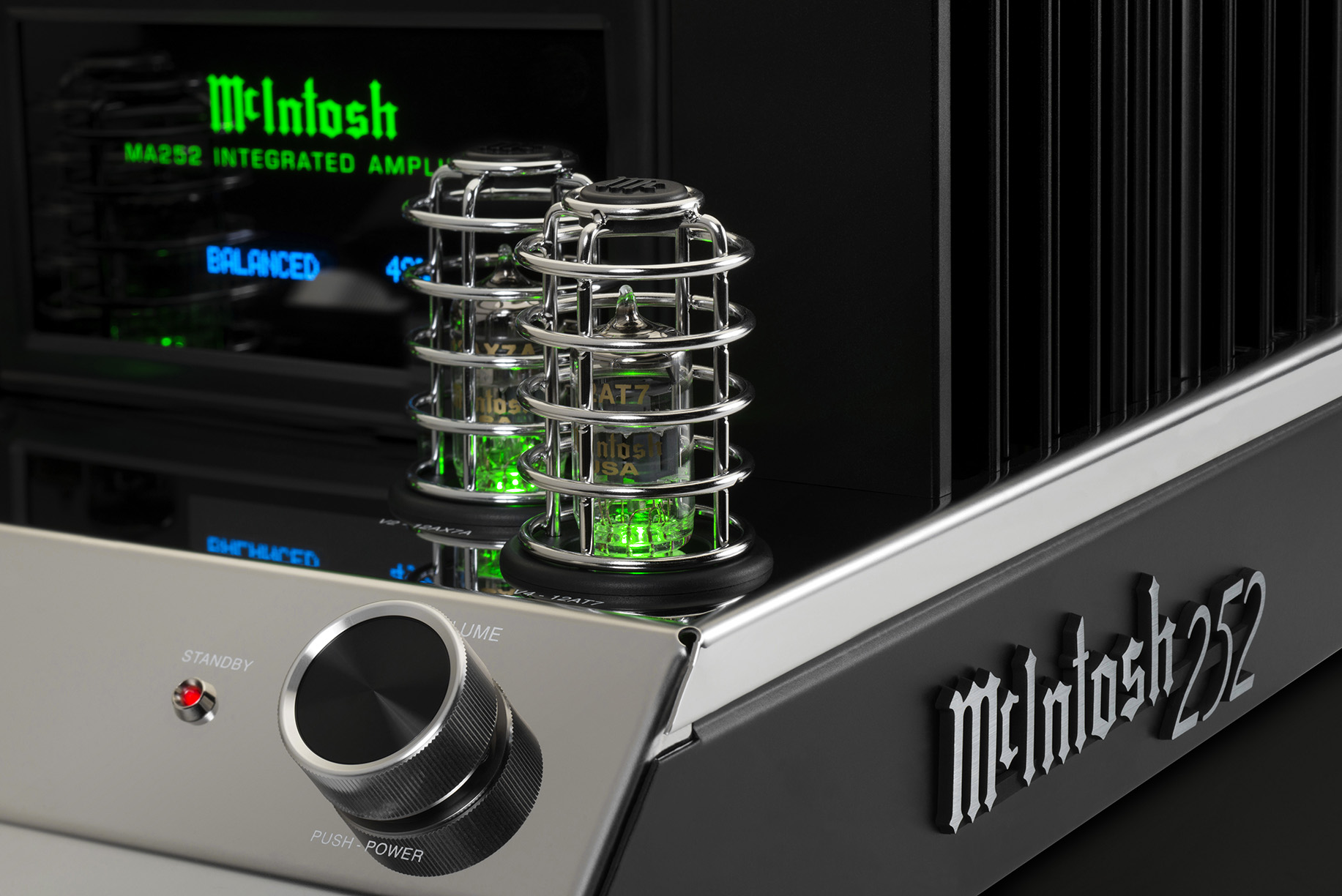
At this point valve aficionados should be scratching their heads, because when they’re operating, valves glow an orange-reddish colour, not green. The valves in the MA252 glow green simply because McIntosh has fitted chameleon LEDs underneath them, which emit a green glow that, during normal operation, is bright enough to outshine the glow of the valve heaters. However when the Power Guard circuit triggers, the LED colour changes from green to orange.
If you’re wondering why McIntosh chose green, it’s because that’s the primary colour used in the McIntosh tartan worn by founder Frank McIntosh’s Scottish forebears. The same green has been used in various applications on all McIntosh products since 1949.
There’s one Power Guard circuit per channel, so if only one channel is clipping, only that channel’s two valves will change colour. If both channels are clipping, all four valves will glow that orange colour.
Unlike many recent amplifier designs, which feature integrated DACs, McIntosh’s MA252 is purely an all-analog affair with two unbalanced line-level inputs, one balanced line-level input and a phono input (moving-magnet).
We were really pleased to discover that McIntosh has included an input trim circuit that allows you to adjust the sensitivity of each of these inputs to exactly match the output of whatever component you’ve connected, so that when you switch from one input to the other, the volume issuing from your speakers will stay the same, so you don’t have to adjust volume level every time you switch from one input to another.
Unlike some such circuits, which don’t offer much of an adjustment range, McIntosh’s trim circuit has a full 12dB of adjustment available… and in precise 0.5dB steps too. You can rename the inputs anything you like so long as you don’t exceed a nine letter description and, if you’re not using an input, you can have the McIntosh ignore it completely, so it becomes transparent when you’re switching inputs.
We can see how the transparency function makes sense on a component that has a great many inputs, several of which will inevitably be unused, but when there are only four inputs, as on the MA252, it doesn’t really speed up input selection all that much.
You can also choose to have the McIntosh switch itself off automatically after 30 minutes of inactivity (no music, no controls moved etc), or not. In order to extend valve life, we would recommend you leave the McIntosh in its ‘Auto’ switch-off mode (which is the default), but small signal valves such as the 12AX7A and 12AT7 are not only virtually indestructible, but also relatively inexpensive, so it really wouldn’t much matter if you left the amplifier powered-up permanently.
Listening sessions
Installation was mostly uneventful, except that we very nearly missed that instead of aligning the RCA inputs of the two unbalanced inputs vertically – like almost every other amplifier manufacturer in the world – McIntosh has aligned them horizontally.
We decided this made excellent sense, because it means the left input is on the same side as the left speaker outputs, and the right input is on the same side as the right speaker outputs, whereas if they were vertical, you’d actually have to know whether the right input was at the top or the bottom.
We were was also pleased that the balanced input is completely isolated from the unbalanced inputs – some amplifiers share an input and you only find out when you get the amplifier home and read the manual carefully that you can only use one or the other of two inputs. Effectively, this gives the McIntosh MA52 four inputs. There’s also a mono subwoofer output, which is a nice touch.
The speaker terminals, despite looking great and being gold-plated, didn’t turn very smoothly, and felt quite ‘rough’ as they were rotated. Room for improvement here then. Still, connecting speaker cables is something you’ll only have to do the once, and if your speaker cables are terminated in banana plugs, you won’t have an issue at all.
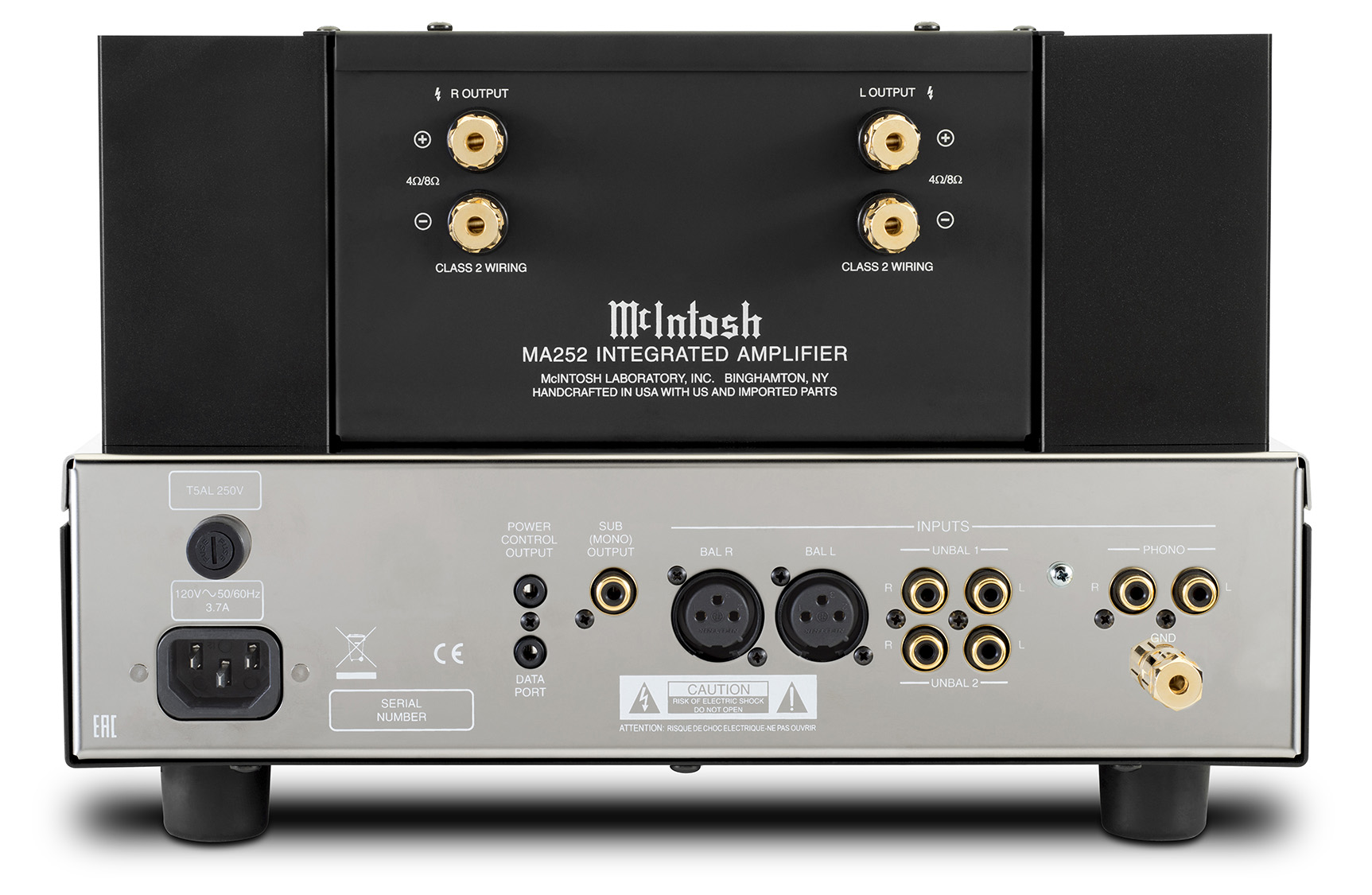
The MA252 has a fantastic-looking OLED front panel display which shows the amplifier’s model number and the words ‘Tube Warmup’ while the amplifier is warming up (which takes around 15 seconds), after which it shows the source selected (which will be your last-used source), after which the volume level slowly ramps up from zero to stop at whatever volume level you were last listening.
While the amplifier is warming up, the LEDs illuminating the small signal valves glow orange, so when they turn green, you’ll know the amplifier is ready to go.
But the description ‘warmup’ is a bit of a misnomer because if you switch the amplifier off after it’s been operating for several days, and is totally warm, then switch it immediately back on, it will still spend 15 seconds ‘warming up’ again. In the light of this, ‘Initialising’ might have been a better word to use… except that maybe it would have too many letters to fit into the display.
The McIntosh MA252 ‘remembers’ balance, bass and treble settings independently for each input. So if, for example, you have adjusted the channel balance of the phono input to compensate for a slight voltage difference in your phono cartridge’s left and right channels (and this would be the case with almost every phono cartridge on the planet), then when you switch from your phono input to, say, your DAC on another input, the channel balance will revert to 0dB in each channel.
Likewise, if you prefer to roll off the bass a little and accentuate the treble when listening to LPs, the McIntosh will apply these settings whenever you switch to the phono inputs, but revert back to a ‘flat’ tone control setting (or whatever other tone control settings you’ve chosen) whenever you select a different input.
We think this is a really great feature, one that is incredibly useful, but to use it, you will need to use the MA252’s remote control, and before you use the remote control, you will need to install the single AAA battery (a high quality Duracell alkaline battery is supplied), and before you do that you’ll need to find out how to install it, because McIntosh’s remote is so beautifully made that it’s not apparent how to do it, and there is nothing at all about it in the User’s Manual.
If you run your fingernail down the almost invisible seam on the left side of the remote, then pull the back-plate of the remote ‘out and down’ from the bottom, below the logo, you'll reveal the battery compartment. It’s a bit tricky to do the first time, so ask your dealer to show you how to do it before you have a go yourself.
The input selector on the left side of the sloping section of the front panel has a click-stop action and in addition to selecting your desired input, doubles up as the ‘Trim’ control (push it inwards for Trim options).
If you hold the Trim control pushed in for more than a few seconds, you’ll skip past the ‘Trim’ options and the display will instead show your amplifier’s model number, serial number and software version. On our review unit, this last was V1.01.
The volume control on the right of the front panel has a beautiful ‘smooth as silk’ action. Pressing the control inwards activates the amplifier or puts it into standby mode. Rather confusingly, the small LED alongside it shines red both when the amplifier is operating, and also when it’s in standby mode, which seemed to us passing strange. We wondered if maybe ours was miswired.

The very first time we turned up the volume control on the MA252 it was to bring the sound of Lloyd Spiegel’s latest, ‘Backroads’ up to a volume level that made our test room sound like a ‘blues night’ at a small night club… and if that’s the night you’re having, Lloyd Spiegel’s your man (though on this album he’s assisted by the other Spiegels, Marty and Riley, plus a gaggle of fine musicians, with the indefatigable Tim Burnham on drum duties.
Right from the intro track, The Kick Around, which is more boogie than blues, we could hear we were in for a treat, with the McIntosh’s solid-state bits delivering solid, driving bass and beautifully-paced rhythmic drum sound while at the same time the tube-y bits worked their magic on Lloyd’s guitar sound, so that it was simultaneously clean and accurate, yet at the same time warm and alluring.
On Bridges to Burn, one of our favourite tracks on the album, the warmth the valves bring to Levi Harkness’s bass is exemplary, yet at the same time listen to the drier sound of Burnham’s kit, while Lloyd’s voice is put right out front, just where it should be.
Then just listen to the absolutely stunningly reproduced lead guitar solos on Christina, along with the acoustic and the backing vocals. The McIntosh never puts a foot wrong, keeping a very tight grip on the PRAT while at the same time never once sounding clinical.
If you’re looking for a definition of a ‘musical’ sound, the MA252 is it personified. And just listen to the way the McIntosh handles the complex rhythms on Candy Cane…fantastic! But we can’t talk about the fabulous music and sonics on Backroads without mentioning Spiegel’s lyrics, which are always insightful and often beautifully poetic.
A switch to heavy metal, in this case Stone Temple Pilots’ album 'Stone Temple Pilot's (the second and most recent of the two identically-titled albums from the band of the same name… what were they thinking?) showed the band is powering to even-greater heights and that their newest vocalist Jeff Gut (who hopefully won’t follow too closely in the footsteps of previous STP vocalists Scott Weiland and Chester Bennington) is a real acquisition.
The McIntosh MA252 proved easily capable of separating the myriad musical strands presented in STP’s work, and also capable of digging through the ‘grunge’ to deliver the impeccable underlying musicianship. Lesser amps deliver STP as a ‘wall of sound’ whereas played through the MA252 the sound became multi-dimensional, and we could hear all the separate layers.
Listening to STP always has us cranking the volume, and with the McIntosh MA252, it had so much power on tap that we could crank it up to ear-shattering levels without running into clipping, or without even the sound getting hard… that lovely valve softness remained an underlying sonic signature. The lack of circuit noise was made shatteringly clear by the unexpected finale to Roll Me Under, which comes as a sonic wake-up call.
From blues to heavy metal to… classical of course, the forerunner of both, and to a true classic, Beethoven’s 5th, in the hands of Carlos Kleiber and the Vienna Philharmonic, which is likely the best recording of this work available… though we can’t say we’ve heard 'em all.
Carlos Kleiber was an enigma, a conductor who barely conducted, but when he did, wow! He could always bring out the best in any orchestra, and usually better than their best. You can hear this in this Fifth, and most particularly with the aid of the clarity of the MA252 letting you reach into the soul of the music.
The famous repeated four note intro doesn’t sound at all clichéd – it’s like you’re hearing it for the first time. Indeed Kleiber and the VP make the entire symphony sound fresh and vibrant, and there’s a beautifully articulated energy to the performance that just ramps up the tension for the stunning finale. The coup de grâce is the superb acoustic of the venue and the quality of the DG recording itself, both of which are enhanced by the McIntosh MA252.
We can’t help thinking that perhaps one of the secrets to Kleiber’s performances was that he was never ‘staled’ by the type of gruelling concert schedule that was (and still would be, were it not for Covid-19) typical of most conductors.
The wonder of this recording is that it might never have been made at all, because Kleiber’s father Erich (himself a famous musician and conductor) actively tried to dissuade his son from pursuing a career in music, instead pushing him to finish a degree in a chemistry. ‘What a pity the boy is musically talented’, he once wrote to a friend.
When we wanted to test the tonal accuracy of the McIntosh MA252 with piano, the recording we played first was a favourite, Hélène Grimaud’s recording of transcriptions of famous works by Bach. Normally we like our J.S. unadorned, but for Grimaud we’ll make an exception, because her playing is like that of no other pianist we have ever heard.
She doesn’t so much ‘play the notes’ as reveal the music behind the notes. She plays Partita No 3 (in a Rachmaninov transcription) like a ballerina, with her fingers just dancing over the keyboard, while the way she plays the Busoni transcription of Chaconne in D minor is like a composer. Unreal. The recording and sonics are superb, and the McIntosh MA252’s sound puts the piano in the listening room. You can ask for no more.
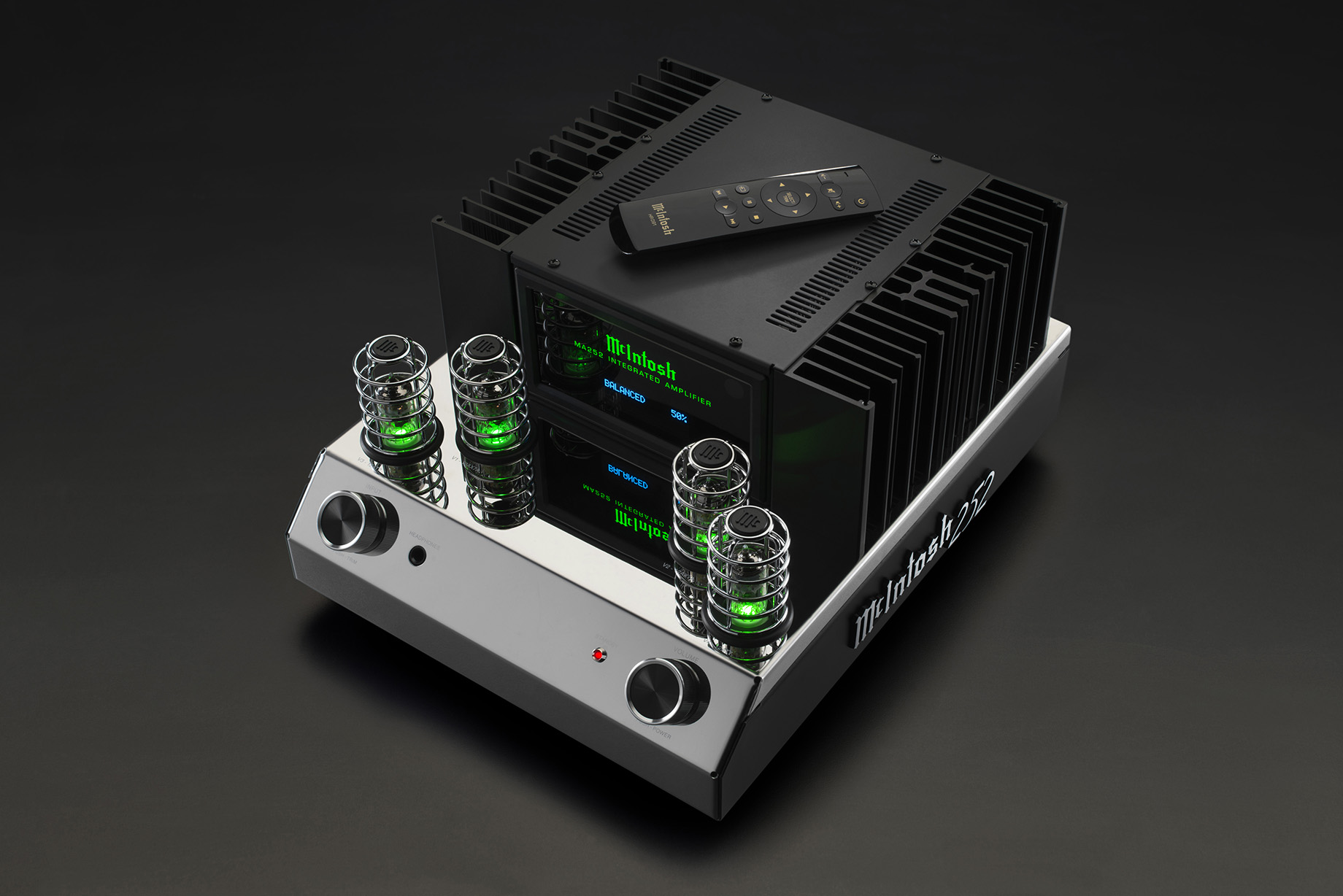
Final verdict
McIntosh has a reputation as an ‘aspirational’ brand – a brand everyone desires to own but few can afford to buy – and certainly products such as the aforementioned MC2301 and the simply stunning XRT2.1K anchor that reputation in reality.
Which makes the McIntosh MA252 something special. It looks like a McIntosh. It sounds like a McIntosh. It’s built like a McIntosh (and built in Binghamton, New York, like all other McIntosh products). But despite the fact that it’s aspirational, its price is such that buying one will not require you to aspire quite as much as most other products wearing McIntosh livery.
Different, yet not different. You know you want one: We certainly do.
Lab test report
Newport Test Labs measured the power output of the McIntosh MA252 as being 130-watts (21.1dBW) per channel at 1kHz, both channels driven into 8Ω, which is clearly much better than McIntosh’s specification of 100-watts per channel. A good 1.1dB better, in fact.
Measured power output into the same load, but with a low-frequency test signal (20Hz) dropped by 0.7dB to 121-watts/20.8dBW. Again, an excellent result that was better than specification.
Measured into more demanding 4Ω loads, again with both channels driven, Newport Test Labs measured an output of 209-watts (23.2dBW) at 1kHz, with output again reducing very slightly at low frequencies, this time to 182-watts (22.6dBW) per channel at 20Hz. However, once again both these test results are higher than McIntosh’s own specification for a 4Ω load impedance, which is 160-watts per channel.
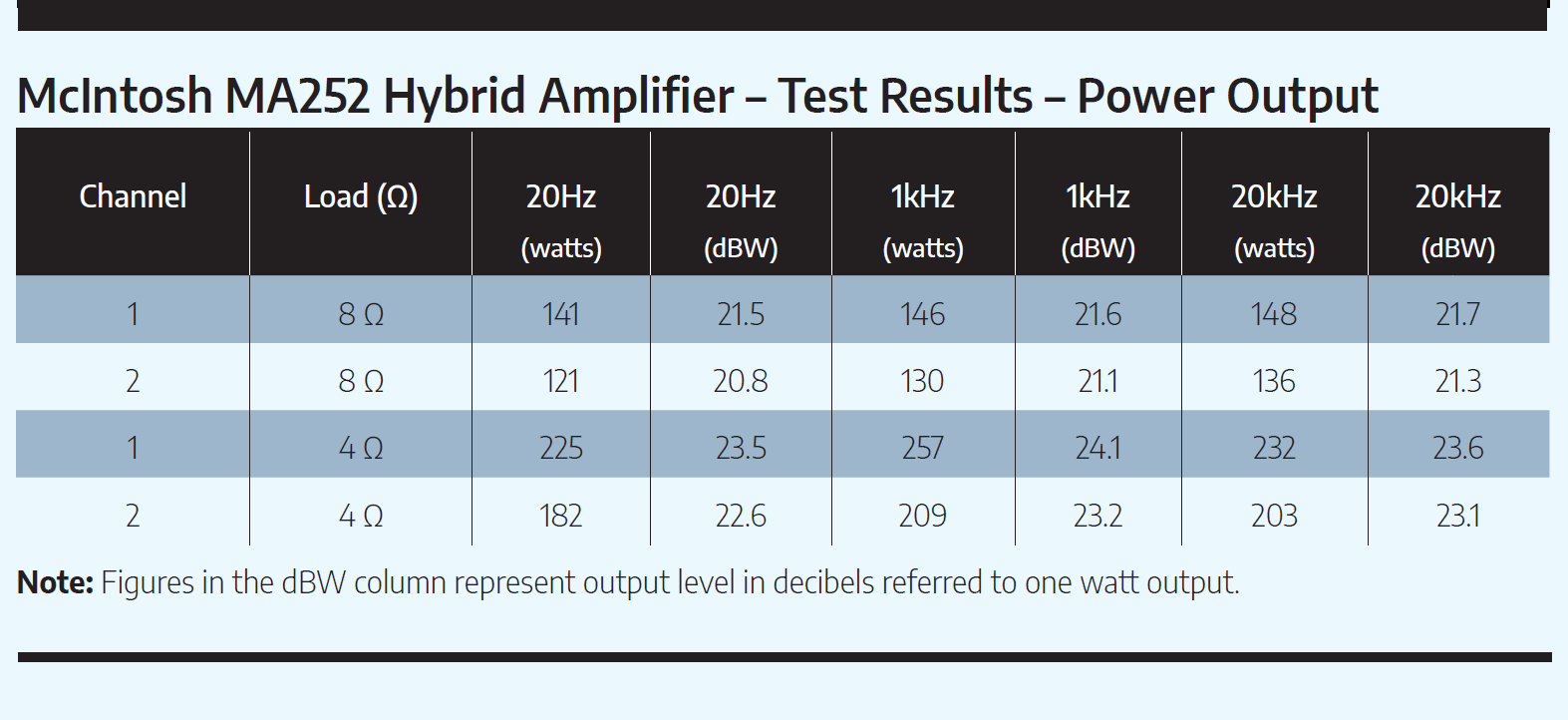
You can see from the tabulated results that when just a single channel is driven the power output of the McIntosh increases quite significantly, which is proof that when reproducing music signals, the MA252 will be able to deliver far higher power outputs than figures tabulated, which are continuous measurements that put the greatest stress on the power supply. In other words, dynamic power, or dynamic headroom, would be excellent.
In fact the difference of 0.9dB at 1kHz into 4Ω loads measured by Newport Test Labs would suggest to me that McIntosh’s specification of 1.8dB is spot-on.
The McIntosh MA252’s clipping indicators are not overly sensitive and their indication varies with frequency, but on average the output has to be above 150-watts per channel into 8Ω before they’ll illuminate, which means that you’ll probably hear the amplifier clipping before you see the clipping visually, except for transient signals. That said, we’d rather have the clipping indicators than not.
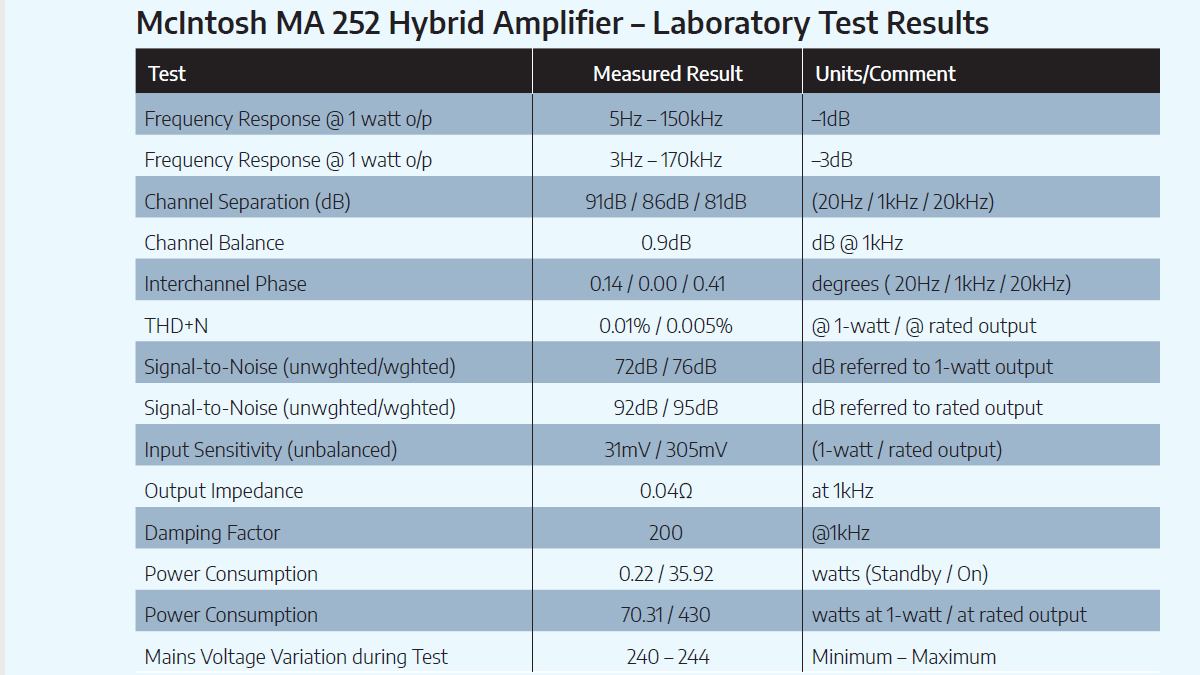
Wideband frequency response, as measured by Newport Test Labs, was excellent, with the McIntosh MA252 returning results of 5Hz to 150kHz (–1dB), and 3Hz to 170kHz (–3dB). This second result is far better than McIntosh’s specification (10Hz to 100kHz).
Channel separation was good without being exceptional, again as you can see from the tabulated figures. As you’d expect, performance was best at low frequencies, with the MA252 returning a result of 91dB at 20Hz. This then decreased to 86dB at 1kHz and 81dB at 20kHz. Even the 20kHz figure is far higher than you’d ever need separation to be (and therefore impossible to hear), so overall an excellent result.
Channel balance was 0.9dB, which is inaudibly low. So, too, was inter-channel phase, with a worst-case result of 0.41° at 20kHz, which is again so low as to be inaudible.
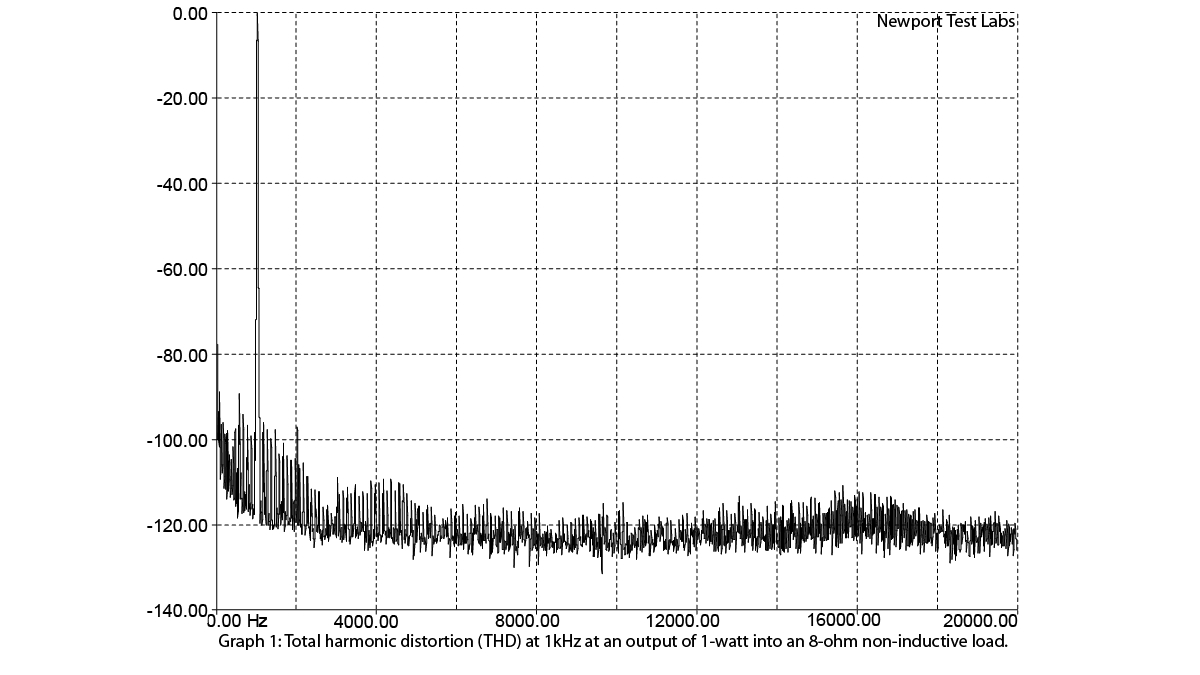
Total harmonic distortion (THD) at an output of 1-watt into 8Ω is shown in Graph 1. You can see that there’s only a single second harmonic (at 2kHz) visible and that it’s 97dB down (0.00141%). The spuriae along the noise floor is presumably related to the valve input stage, but irrespective, it’s more than 110dB down (0.00031%) above 2kHz, and mostly 100dB down (0.001%) below that frequency, so would be inaudible in the presence of signal.

Interestingly, when the MA252 is driven into 4Ω loads (Graph 2), the second harmonic drops to –100dB (0.001%) but we see a third harmonic at the same level, then a fifth harmonic at –105dB (0.00056%) and a seventh at –108dB (0.00039%).
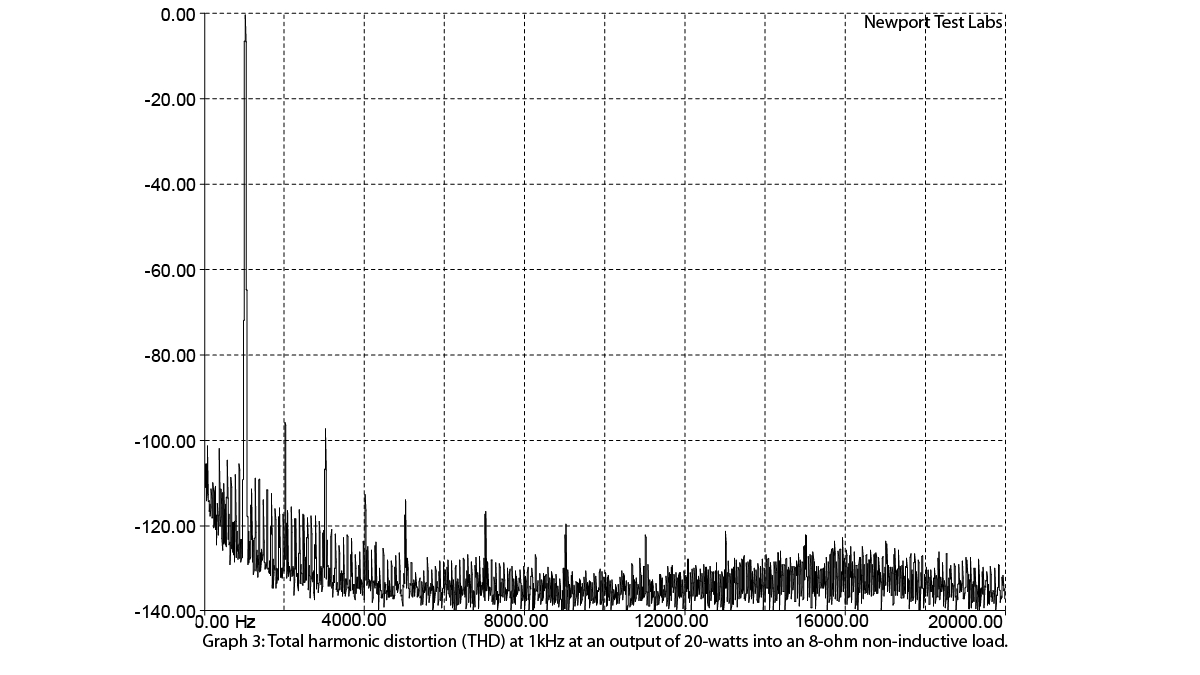
When the McIntosh is delivering 20-watts, which would be a fairly typical day-to-day output in a home, you see that into 8Ω loads (Graph 3), there are dominant second- and third-order harmonics at around –95dB (0.00177%) and although there are other higher-order distortion components visible on the graph, the first four are more than 110dB (0.00031%) down, and the others more than 120dB down (0.0001%).
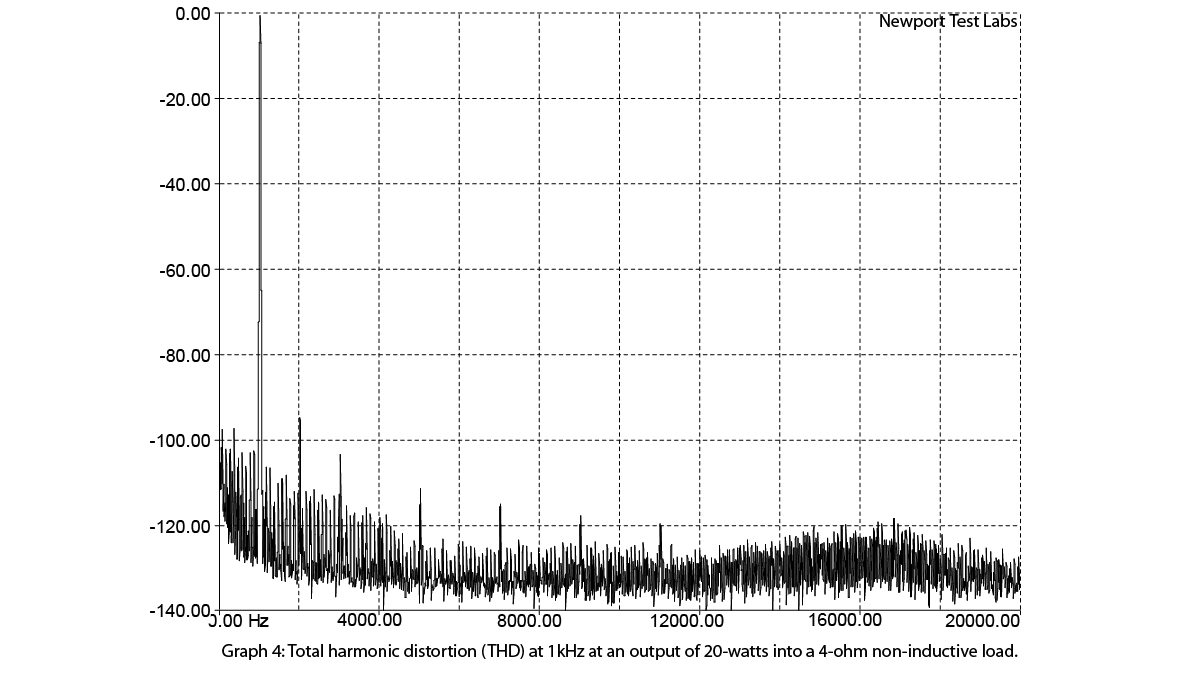
Interestingly, at this output level, distortion into a 4Ω load is slightly lower (Graph 4). In both cases, you can see that the overall noise floor across the majority of the midrange and high frequencies is more than 120dB down.
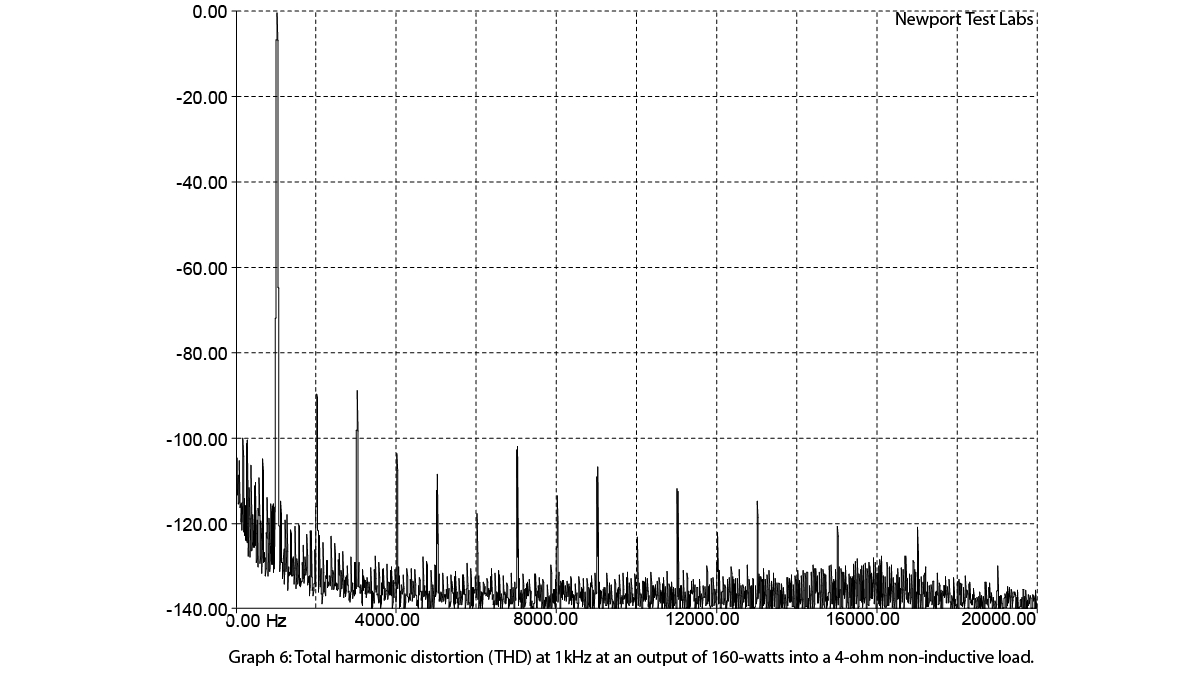
At rated output, the situation is reversed again, with distortion at 4Ω (Graph 6, above) being a little higher than it is into 8Ω (Graph 5, below).
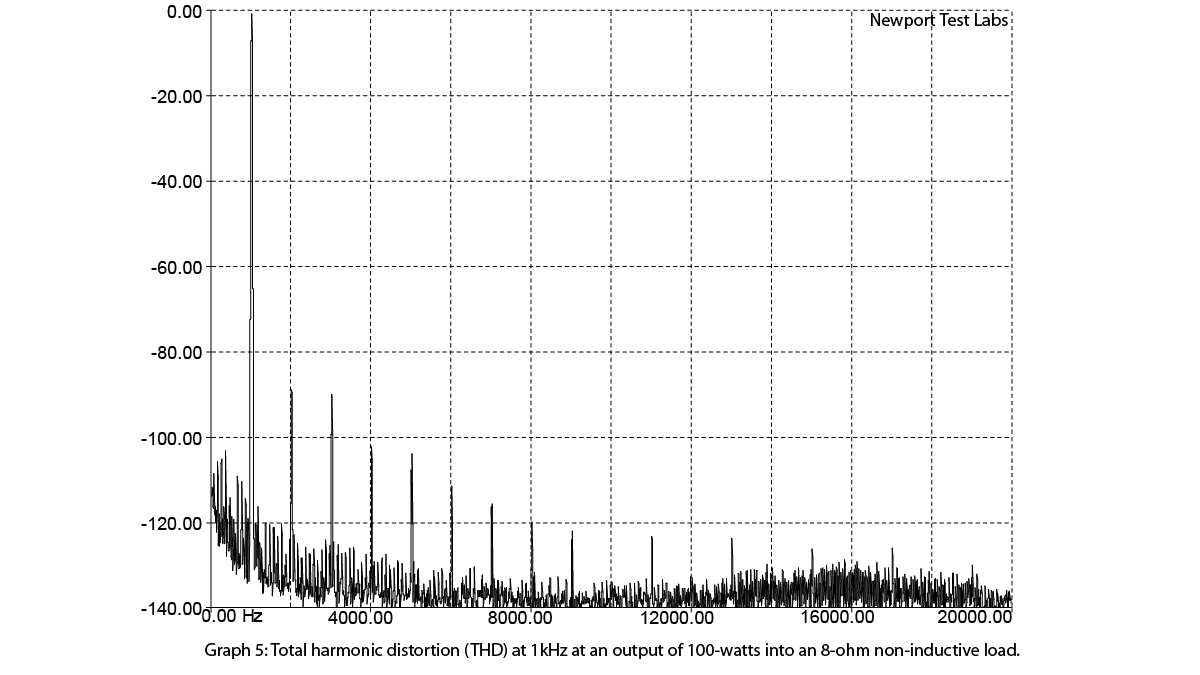
In both cases, however, the highest components – at around –95dB (0.00177%) at both impedances – are the second and third-order components and these levels are too low to be audible but, if they were, they’d make the amplifier sound richer and more musical than if they were not there at all. Again, almost all the higher-order components are more than 100dB down (0.001%) and the noise floor is now down at around –140dB.
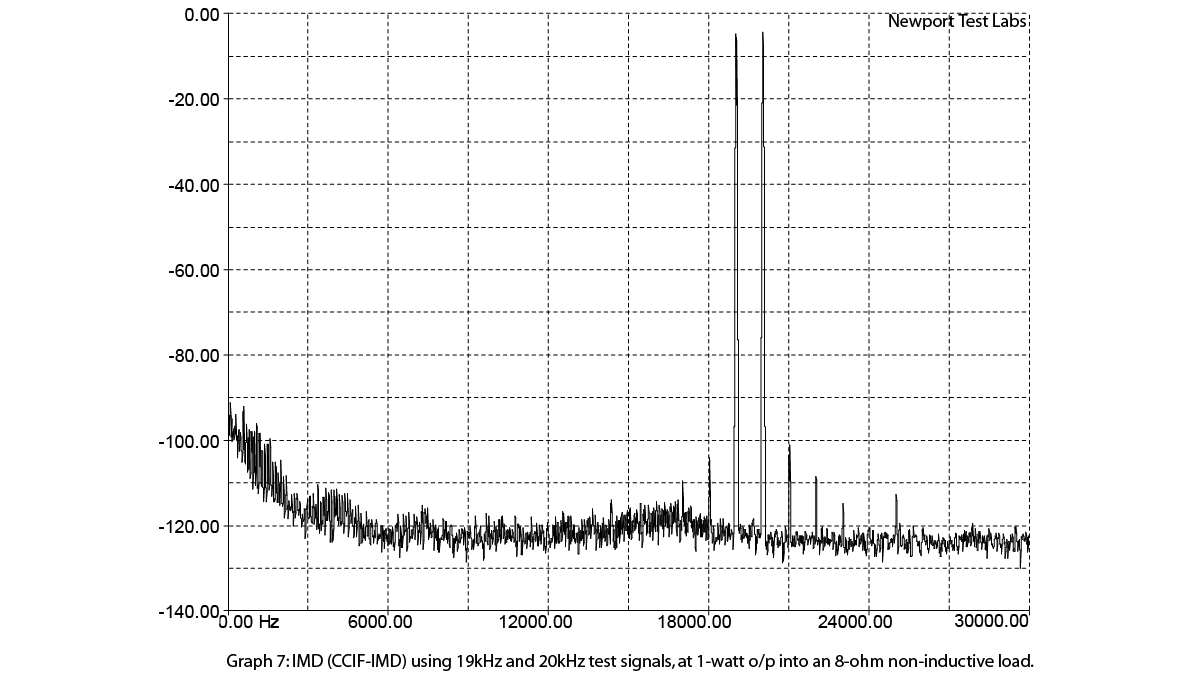
Intermodulation distortion (CCIF-IMD) at 1-watt (Graph 7) was extremely low with the absence of high-frequency sidebands either side of the two test signals at 19kHz and 20kHz being particularly notable and the few that are visible are all more than 100dB down (0.001%). The regenerated 1kHz difference signal at 1kHz is just visible in the low-frequency noise, at around –100dB (0.001%). Speaking of noise, you can see that the low-frequency noise is more than 90dB below the 1-watt output level.
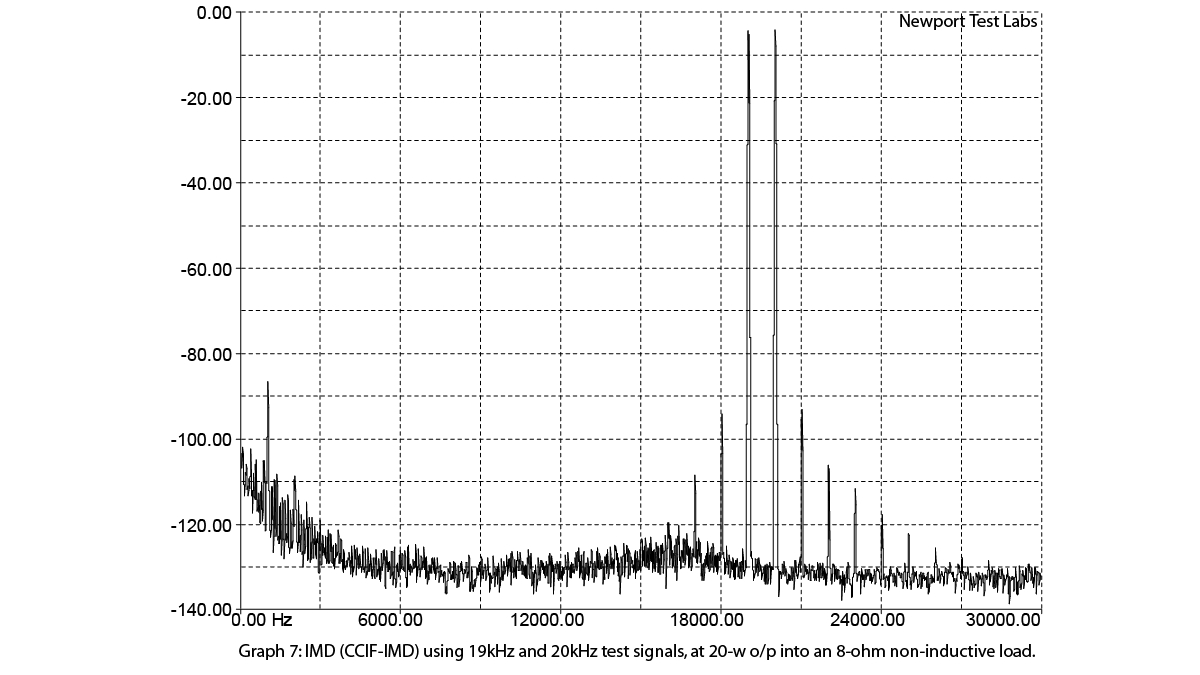
Increasing power output to 20-watts, using the same IMD test signal (Graph 8) sees a relatively minor increase in the level of the high-frequency sidebands, plus a rather academically intriguing difference in the symmetry of those sidebands, but the major difference is the increase in the level of the 1kHz difference signal to –87dB (0.00446%).
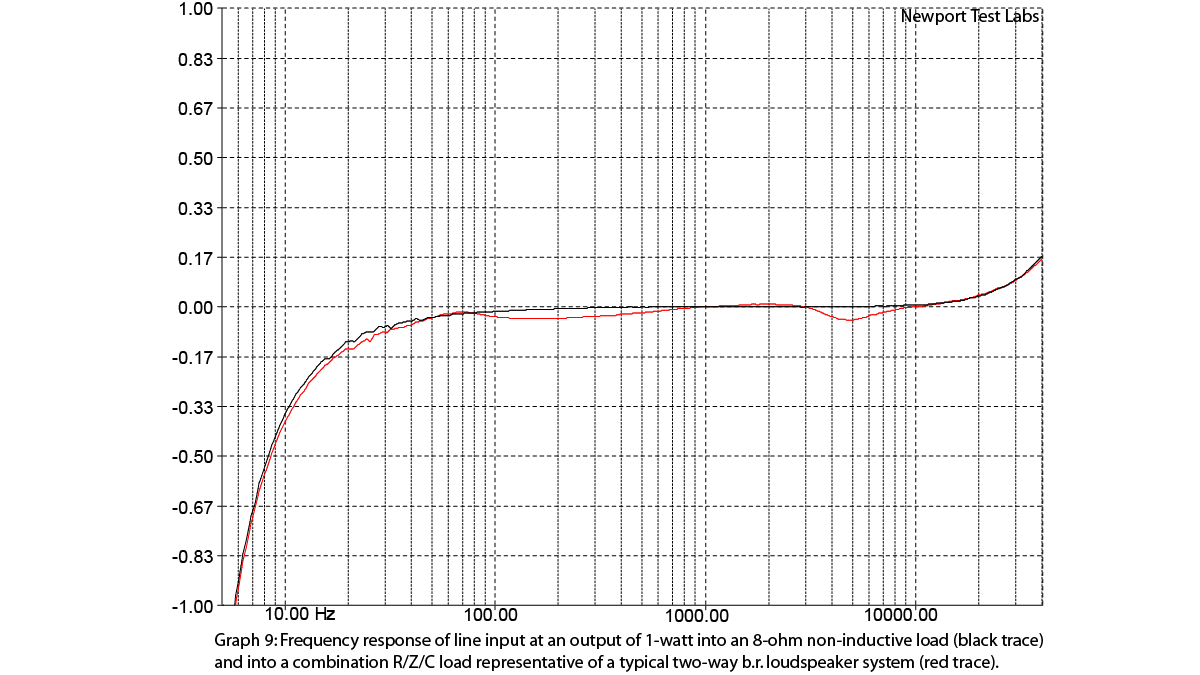
Audio band frequency response was excellent, as you can see for yourself on Graph 9. This graph has two traces. The black trace shows the McIntosh MA252’s response when driving a standard laboratory test load (a high-power non-inductive 8Ω resistor) and you can see that response was just 0.09dB down at 20Hz and +0.03dB at 20kHz, for an overall response of 20Hz to 20kHz ±0.06dB. This result is, once again, is much better than McIntosh’s own specification for this parameter.
The red trace on Graph 9 shows the McIntosh MA252’s frequency response when it is driving a complex load that simulates that of a real two-way bass reflex loudspeaker. As you can see, the differences between the two traces are minuscule, which means the frequency response of the MA252 will always be the same no matter what loudspeakers you use with it.

The McIntosh MA252’s tone control action (Graph 10) is highly unusual. The ‘bass’ tone control has an effect more like that of a graphic equaliser than a conventional bass tone control, with a peak boost/cut effect of around ±10dB at 75Hz that diminishes to around ±2dB at 20Hz. This means you’ll get emphasis in the upper low-frequencies, but almost none at lower frequencies, which is certainly a very ‘speaker friendly’ approach. High-frequency boost action is more like a conventional treble tone control, but we would have preferred a greater shelving action.
The overall signal-to-noise ratios measured by Newport Test Labs were only average referred to a one-watt output level (72dB unweighted; 76dB A-weighted), improving to 92dB and 95dB respectively when referred to rated output, with the 95dB test result being 2dB shy of McIntosh’s specification of 97dB.
Square wave testing revealed that there’s a small 1.5dB lift in MA252’s frequency response at around 107kHz, which is what gives rise to the overshoot visible on the leading edge of all four oscillograms.


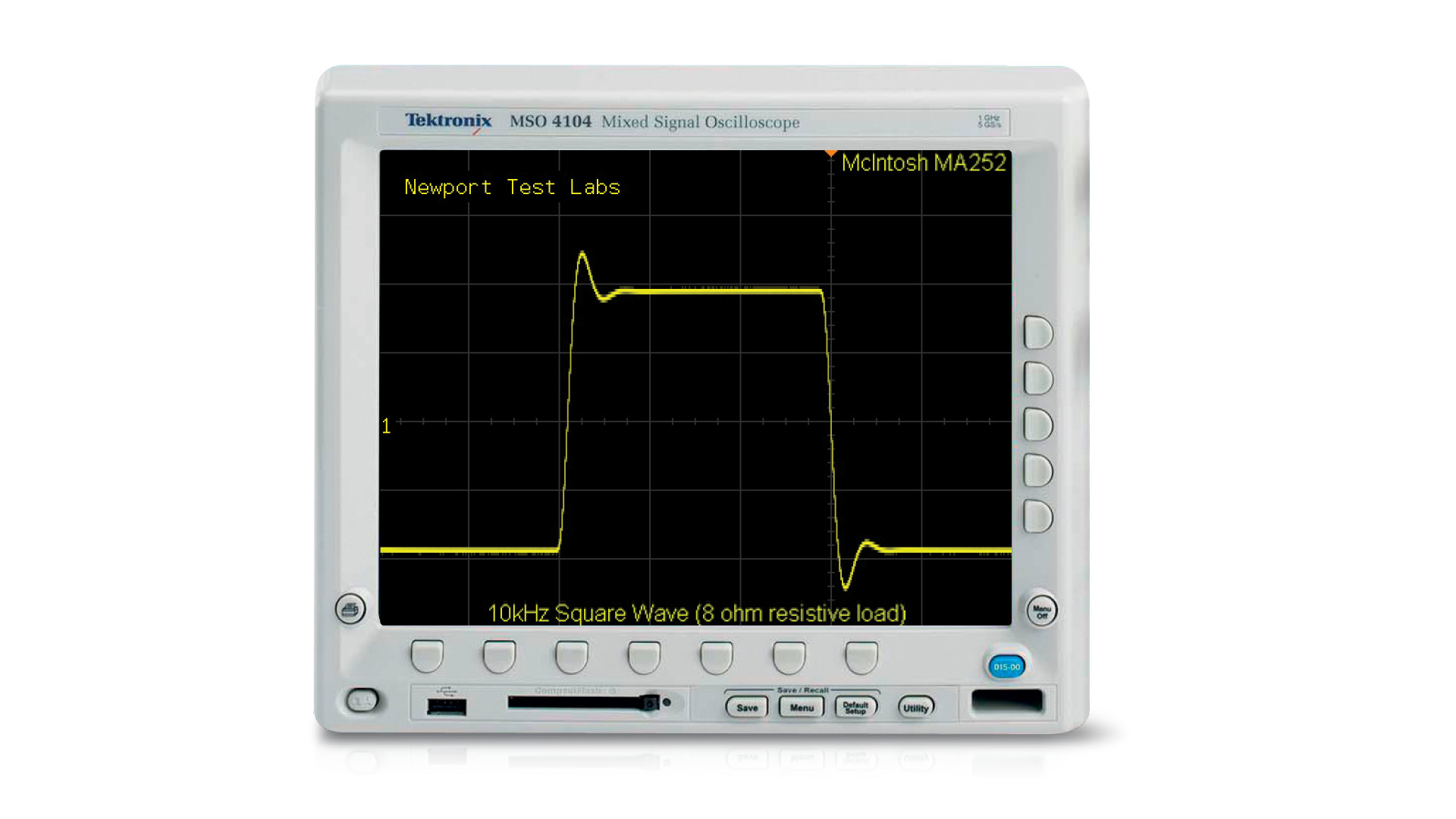
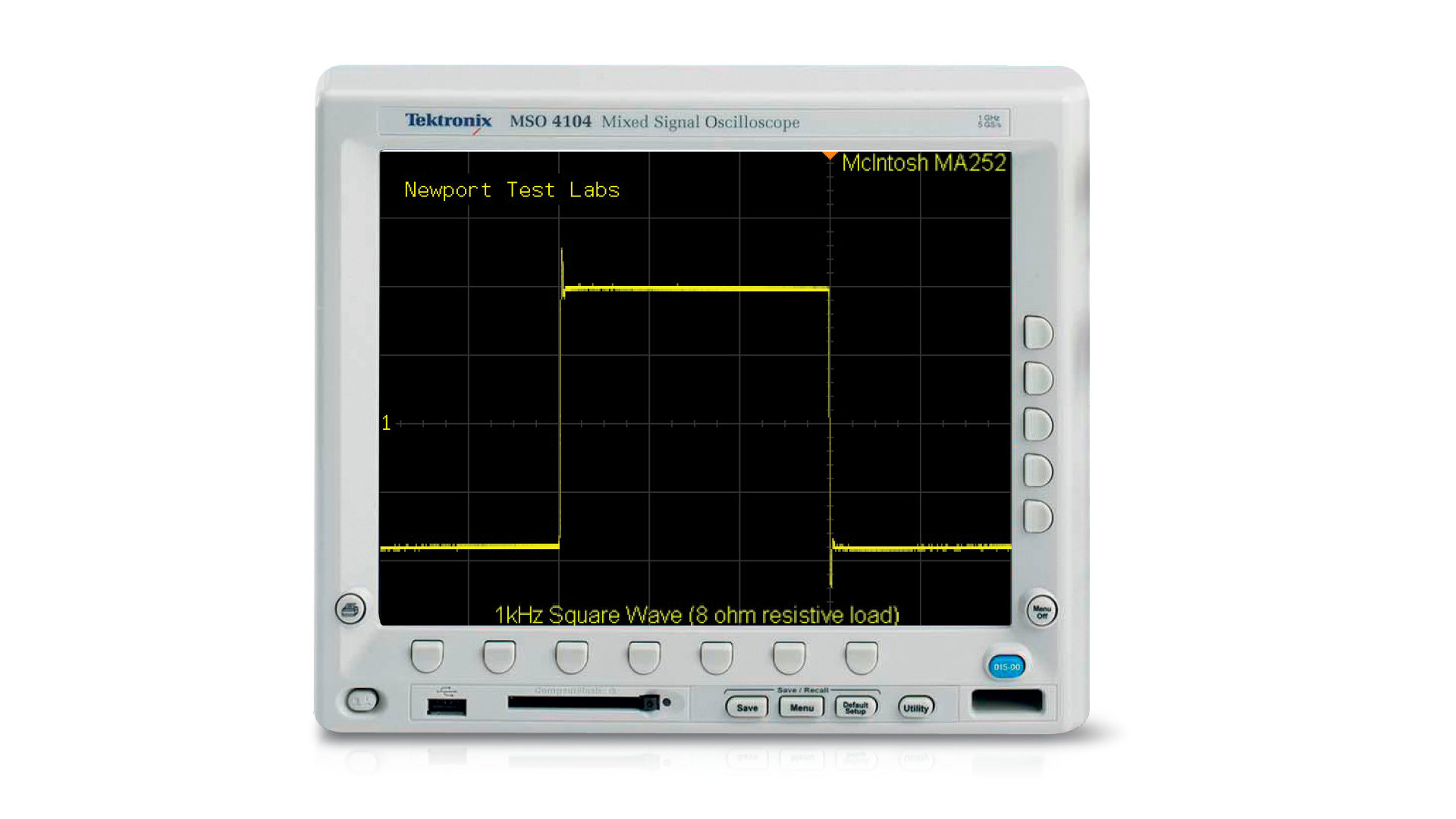
That aside, the tilt of the waveform of the 100Hz measurement simply confirms the MA252’s non-d.c. low-frequency extension as noted previously, but there is no phase shift evident, which is excellent.
Likewise, the 1kHz square wave is otherwise commendably ‘square’… indeed perfect except for the overshoot.
The 10kHz square wave shows an extremely fast rise-time, while the square wave that demonstrates the MA252’s performance when it is driving a highly reactive load (8Ω in parallel with 2µF) shows an almost half-height overshoot plus a little associated ringing. This suggests the amplifier will be completely stable into highly reactive loads.
The McIntosh MA252 will certainly be able to control even the largest-coned bass drivers, thanks to an output impedance of 0.04Ω at 1kHz delivering a damping factor of 200, a figure high enough that no further damping would ever be required.
As for input sensitivity, Newport Test Labs determined that to deliver one-watt it was necessary to provide an input voltage of 31mV, which makes the MA252 quite sensitive and puts gain at 39dB. For rated output, 305mV was required, almost exactly the equal of McIntosh’s specification of 0.3V. The input sensitivity of the balanced input was 610mV.
Power consumption was only modest, so that the McIntosh MA252 will pull only around 70-watts from your mains supply under typical operating conditions. Push it to the max, however, and you’re looking at consumption of more than 400-watts. In standby mode, it draws only 0.22-watts, well below the Australian government’s standard for this mode, meaning you could happily leave the MA252 in standby anytime except your annual holidays.
Overall, outstandingly good technical performance from this powerful hybrid integrated amplifier.
Australian Hi-Fi is one of What Hi-Fi?’s sister titles from Down Under and Australia’s longest-running and most successful hi-fi magazines, having been in continuous publication since 1969. Now edited by What Hi-Fi?'s Becky Roberts, every issue is packed with authoritative reviews of hi-fi equipment ranging from portables to state-of-the-art audiophile systems (and everything in between), information on new product launches, and ‘how-to’ articles to help you get the best quality sound for your home.
Click here for more information about Australian Hi-Fi, including links to buy individual digital editions and details on how best to subscribe.
